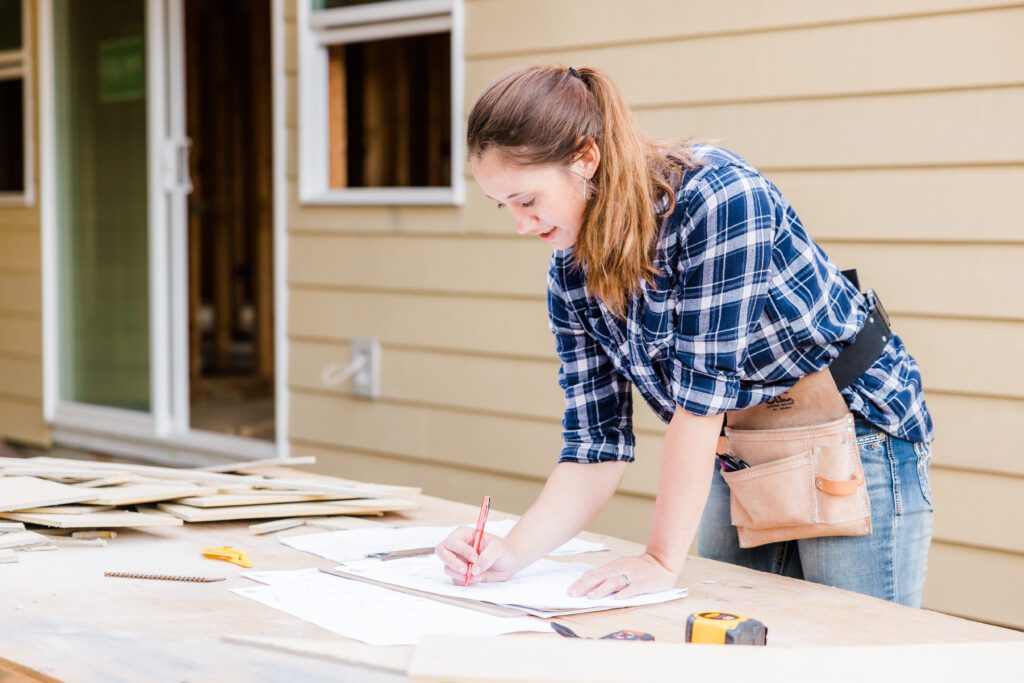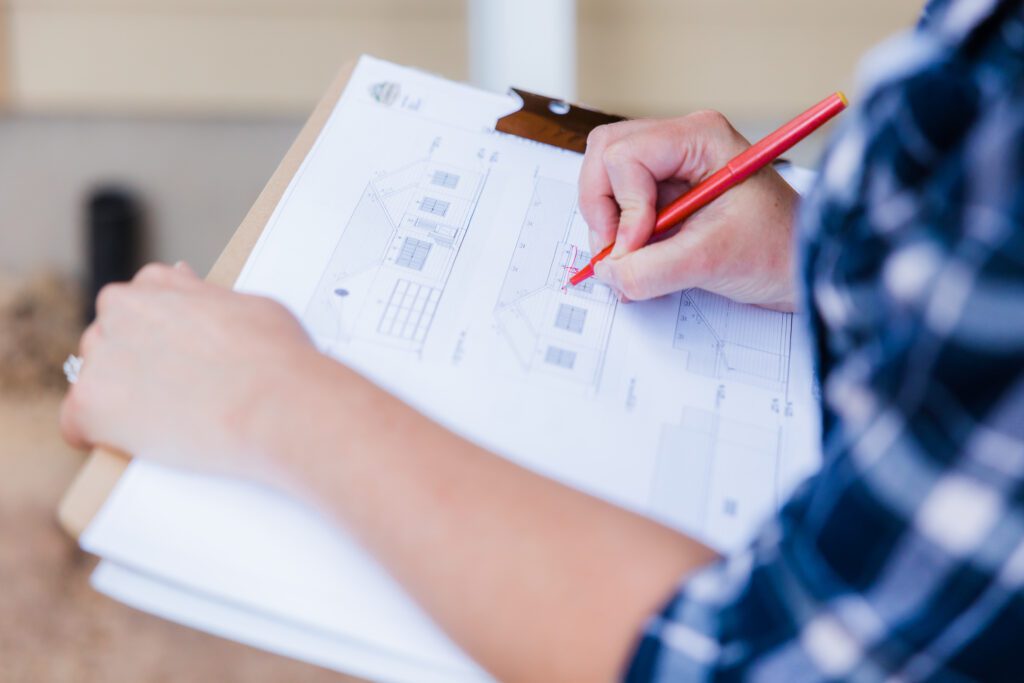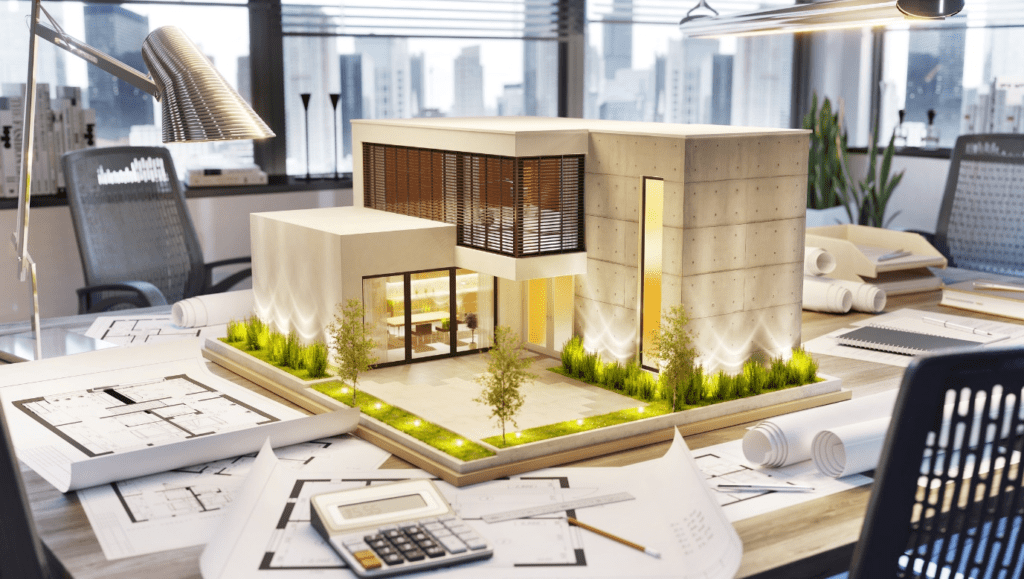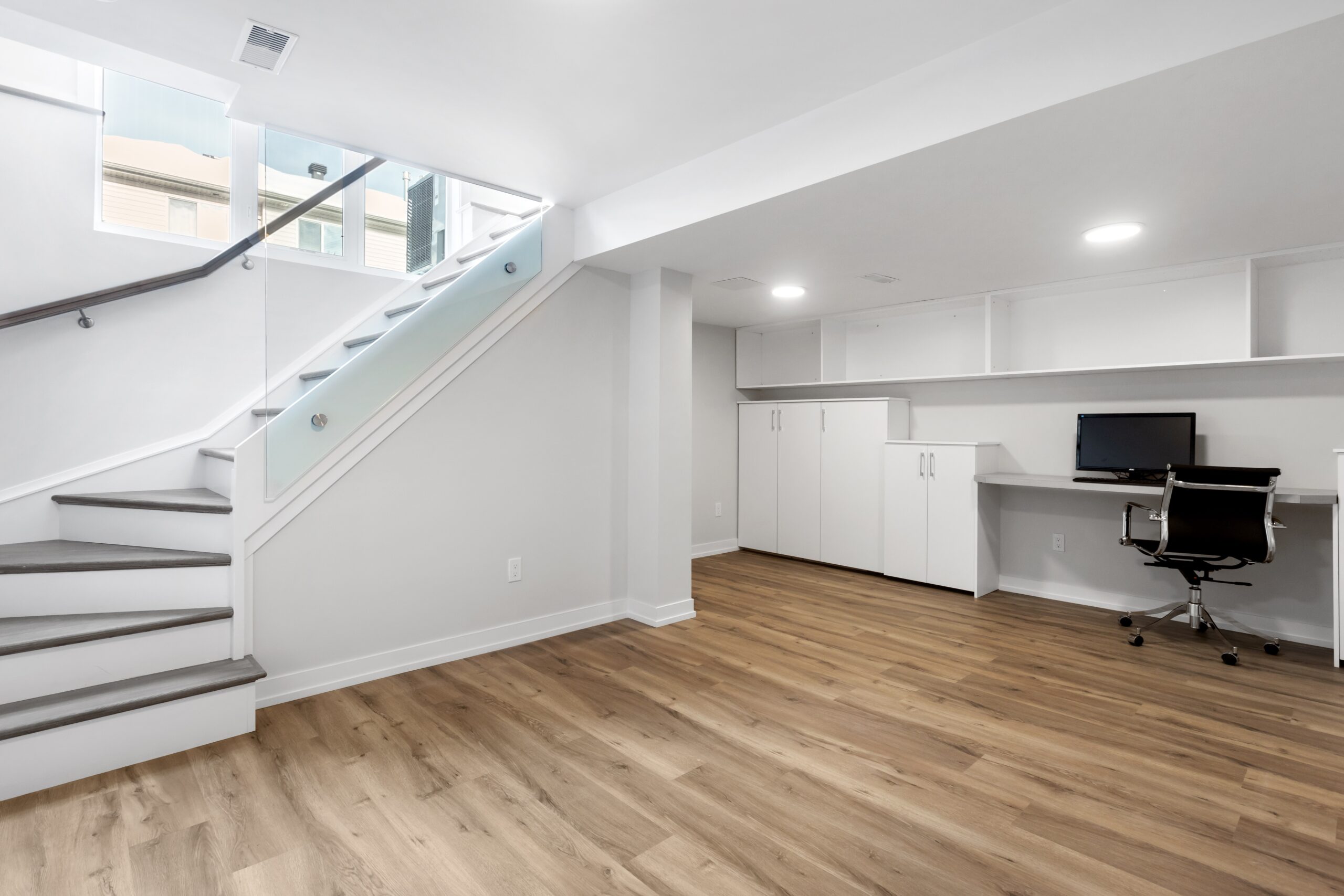Embarking on a big remodel, whether that’s an addition, space conversion, open concept, or granny flat, is a journey few people feel confident walking alone.
Structural requirements, zoning and code restrictions, and the budget implications of every design decision can all make or break a remodel. While tackling those topics alone can seem daunting, a good designer can make the process feel effortless.
There are many benefits of working with a designer to plan a big remodel. It can make remodeling seamless, stress-free, and (believe it or not) enjoyable! Keep reading to learn the top 7 benefits of working with a designer on a big remodel project.
#1. They have first-hand experience with zoning and code restrictions

One of the best things about working with a designer is the wealth of experience they bring to the table. Code restrictions vary from state to state and even city to city. A designer knows how to work within the rules to help get what you want. First-hand knowledge of the common code and zoning pitfalls can also help them anticipate speed bumps early, and plan around the challenges so your project stays on track.
#2. They advise on structural implications from Day 1
The bigger the remodel, the more cautious you need to be during the planning phase. No designer will expect you to know what’s structurally possible before you approach them. This is why working with a designer as early as possible during planning is so important. You can discuss your ideas, goals, dreams, and vision in your very first consultation.
Working with a designer gains you an understanding of how your home is put together and the implications for making big structural changes. Your designer can help you understand the budget impact of early design decisions, when you can make changes and find a great solution that doesn’t break the bank.
#3. They have a deep understanding of space planning

Space planning is the art of mastering the flow between rooms and between zones in the room. It’s the science of how a space gets used, and how people move through the home. It’s the unseen magic behind a remodel that looks and feels like it was always meant to be a part of the house.
Space planning is more than furniture placement. It’s all the little details like where doors and windows are placed in a wall, room proportions, focal points, and ceiling height differentials. Good space planning has an enormous impact on your satisfaction in your home after construction is done.
A good designer has a deep understanding of how to best plan how the space will be used. They’ll even consider things like what furniture you have, where it can fit into new designs, and how you can best accentuate the natural light from surrounding windows and/or the direction of the sun.
#4. They offer budgetary estimates early on
Financing your project is one of the most influential elements of your project plan, from first choosing your team through decorating after construction. It doesn’t matter how big or small your budget is. You need to work with a designer you can trust to keep your design within that budget.
A designer will usually ask for your budget upfront, so they know what range they’re working with. It’s important to be honest, as they’ll work within the parameters you give them. Then they’ll talk to you about what you want to accomplish. They should be able to advise you on whether your desired scope can be accomplished in your estimated budget. If you aren’t ready to answer these questions, it helps to plan for the consultation in advance by talking to lenders and narrowing down your priorities vs preferences.
A good designer can help with realistic budget estimates as soon as you get preliminary plans on paper. You’ll know early on whether your project is within range. If needed, the designer can also help you with any adjustments to bring your dream within reach.
At Candid Home Design, we usually start with three preliminary design options:
- A “budget-friendly” option: Which meets your overall goal and includes all the priorities for the lowest price
- An “extras” option: Which costs a bit more and includes both essentials and some “nice to haves”
- A “bells and whistles” option: We’ll figure out the best possible design scenario for your home, with all the wish list items and long term goals. We’ll talk through where budget decisions can be made to get as close as possible to your dream.
Remember, a good designer will help you plan a remodel that meets your needs and budget expectations. They shouldn’t push you to spend more than you want to, and they’ll always have your goals in mind (not their own!).
#5. They provide 3D models, so you can see designs before approving

Remodeling is a big investment. When you’re planning a large-scale remodel, you want to be absolutely certain you’re making the right choice.
A good designer will work within a 3D computer model of your home during the design phase. These allow you to virtually walk through your new home during design meetings, so you can see exactly what every option looks like and make decisions with confidence.
Viewing your 3D model is one of the most exciting parts of the design process. It’s also the most valuable in terms of results.
Seeing your remodel creates a whole new level of understanding and brings your vision to life. It allows you to gain full comprehension of the scale of change and helps you make final decisions.
Virtual models also enable you to easily explain your remodel plans to other members of the team, like your engineer and builder.
#6. They offer real-time support with new ideas
Your designer is there to understand what you want from your remodel and advise you on the best way to get there. Consultations, check-ins, and update conversations are an integral part of the process. They keep you informed on progress, give you a voice in the design process, and allow you to express ideas (and see the changes to your home) in real-time.
Because designers are experts in what they do, they can instantly respond to your ideas, offer advice on the best way to achieve what you want, and build out your ideas to find the perfect solution.
Remember, a good designer will never make you feel out of the loop! Your voice is the most important part of the design process. You should feel comfortable and able to bounce new ideas and get real-time support with things you’re struggling to decide.
#7. They engage in quick & easy virtual conversations, so no wasted time!

Finally, another great thing about working with a designer on a big remodel is that you can manage the entire process virtually – from start to finish – with no issues at all.
Being fully mobile and able to work across any state, Candid Home Design has a modern design process that involves virtual zoom meetings and calls. So, you won’t need to waste time traveling or booking days off work to head into the office!
Despite the process being fully virtual, you’ll feel just as connected to your designer as if they are in the room with you. They’ll be with you every step of the way during the planning of your remodel. You’ll embark on the journey together, reaping all the benefits that come with face-to-face collaboration, without the unnecessary travel in between.
How to plan for your first design meeting
Planning a big remodel can seem daunting, especially if you’ve never worked with a designer before. Being prepared for your first meeting can speed up the process and make it easier to get into the swing of things quickly.
Explore our guide on how to prepare for your meeting with a designer. Or sign up to our email list for insider tips on how to manage the process and make your remodel project a success.
Every home is different, so every design conversation will be unique to you! But, if you’re not sure what to expect from your first meeting, read our guide to the design process to learn what happens in your first design meeting and what you’ll need to do in advance.
Considering hiring Candid Home Design to manage your remodel? We’d love to talk! Learn more about our services today.




